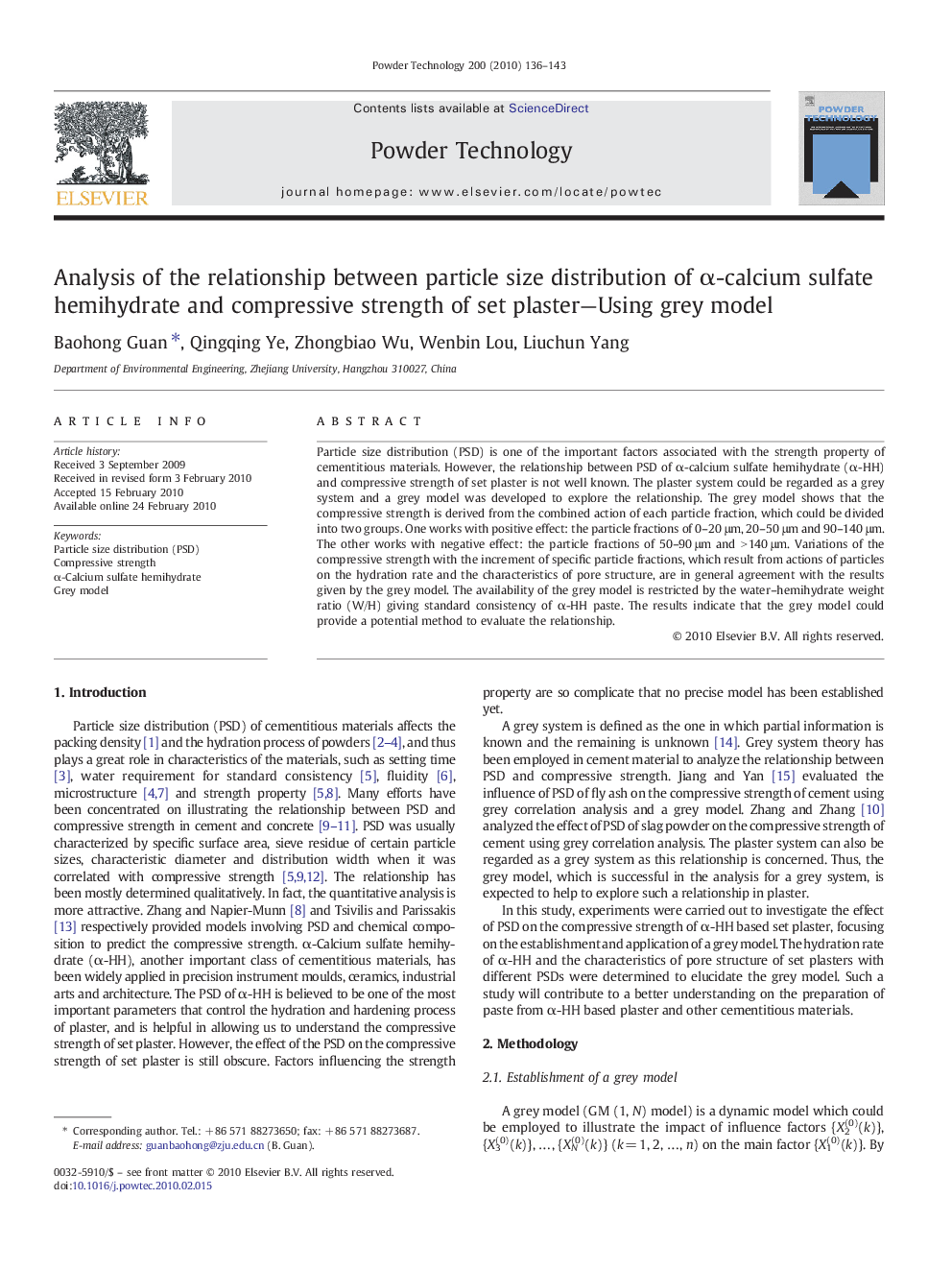| Article ID | Journal | Published Year | Pages | File Type |
|---|---|---|---|---|
| 238100 | Powder Technology | 2010 | 8 Pages |
Particle size distribution (PSD) is one of the important factors associated with the strength property of cementitious materials. However, the relationship between PSD of α-calcium sulfate hemihydrate (α-HH) and compressive strength of set plaster is not well known. The plaster system could be regarded as a grey system and a grey model was developed to explore the relationship. The grey model shows that the compressive strength is derived from the combined action of each particle fraction, which could be divided into two groups. One works with positive effect: the particle fractions of 0–20 μm, 20–50 μm and 90–140 μm. The other works with negative effect: the particle fractions of 50–90 μm and > 140 μm. Variations of the compressive strength with the increment of specific particle fractions, which result from actions of particles on the hydration rate and the characteristics of pore structure, are in general agreement with the results given by the grey model. The availability of the grey model is restricted by the water–hemihydrate weight ratio (W/H) giving standard consistency of α-HH paste. The results indicate that the grey model could provide a potential method to evaluate the relationship.
Graphical abstractA grey model was developed to explore the relationship between particle size distribution (PSD) of α-calcium sulfate hemihydrate and compressive strength of set plaster. The effect of PSD on the compressive strength, which is believed to associate with the characteristics of pore structure, is derived from the combined action involving positive or negative one of each particle fraction.Figure optionsDownload full-size imageDownload as PowerPoint slide
